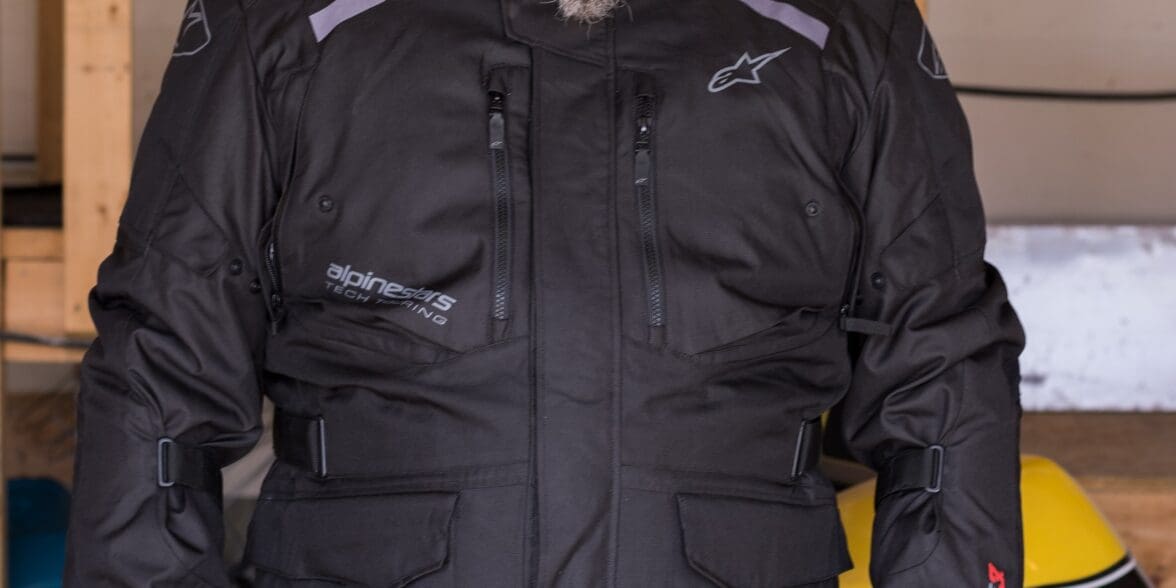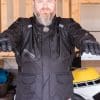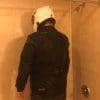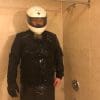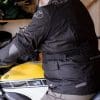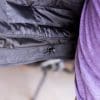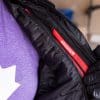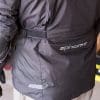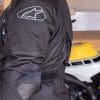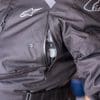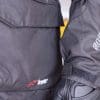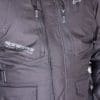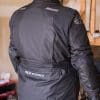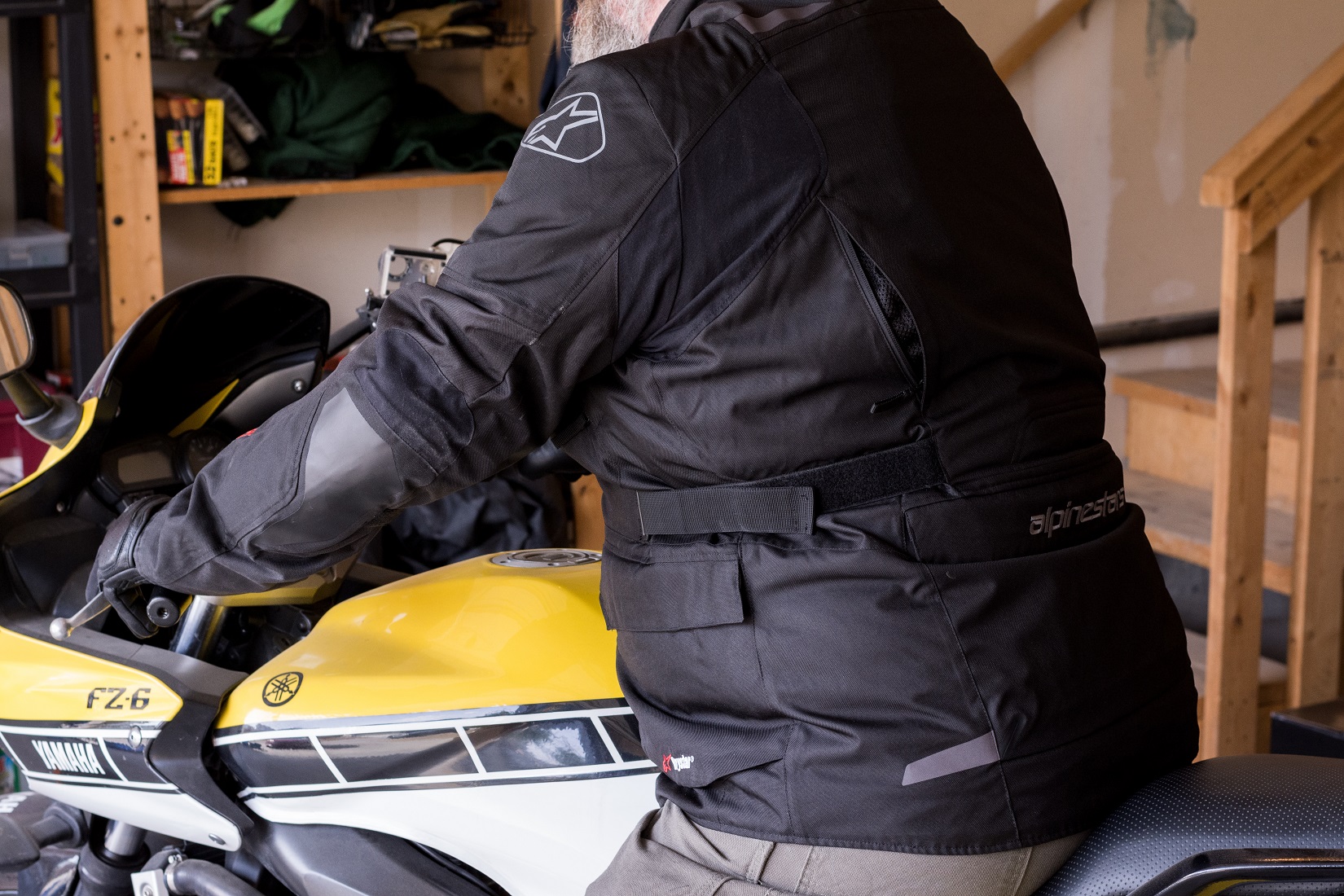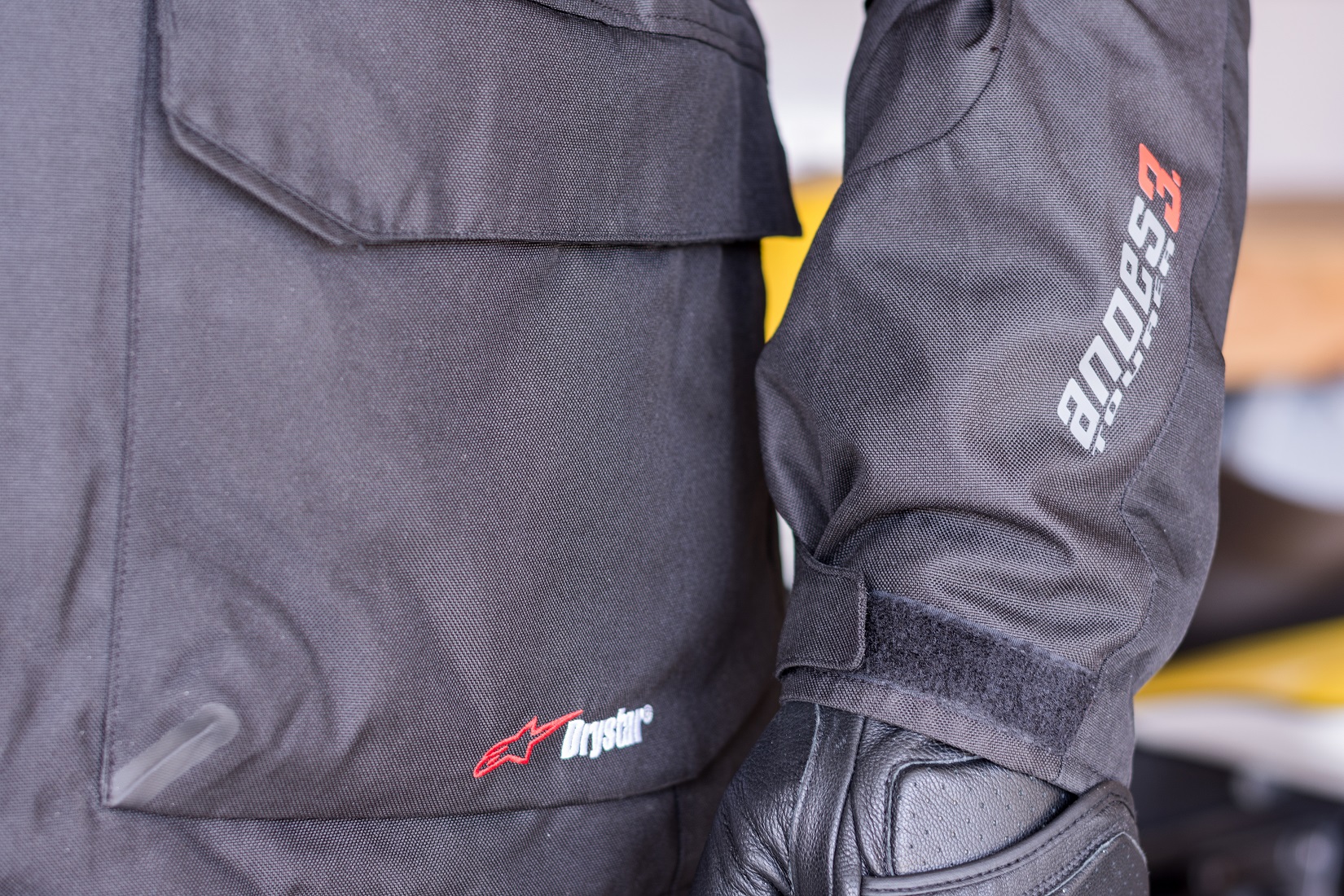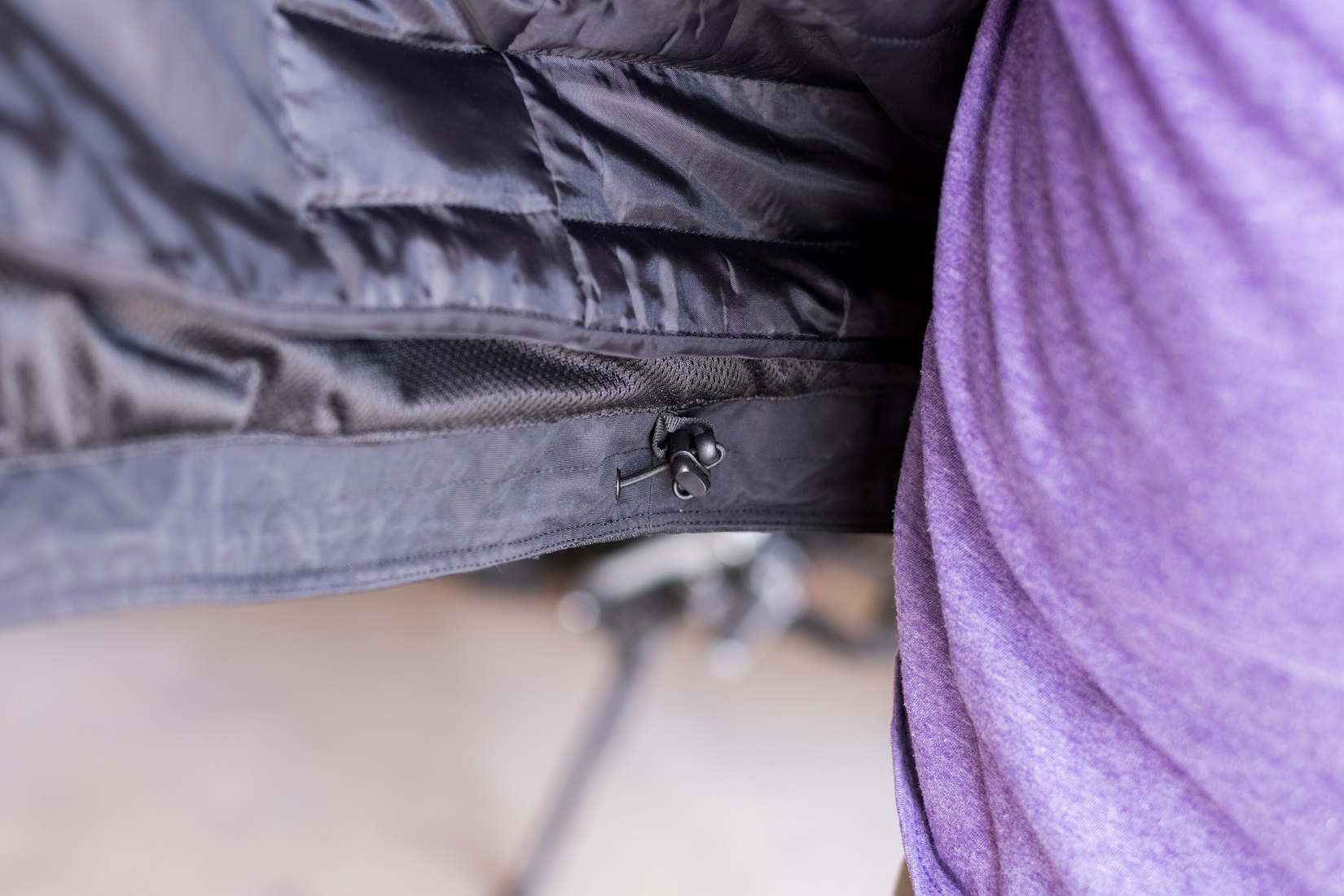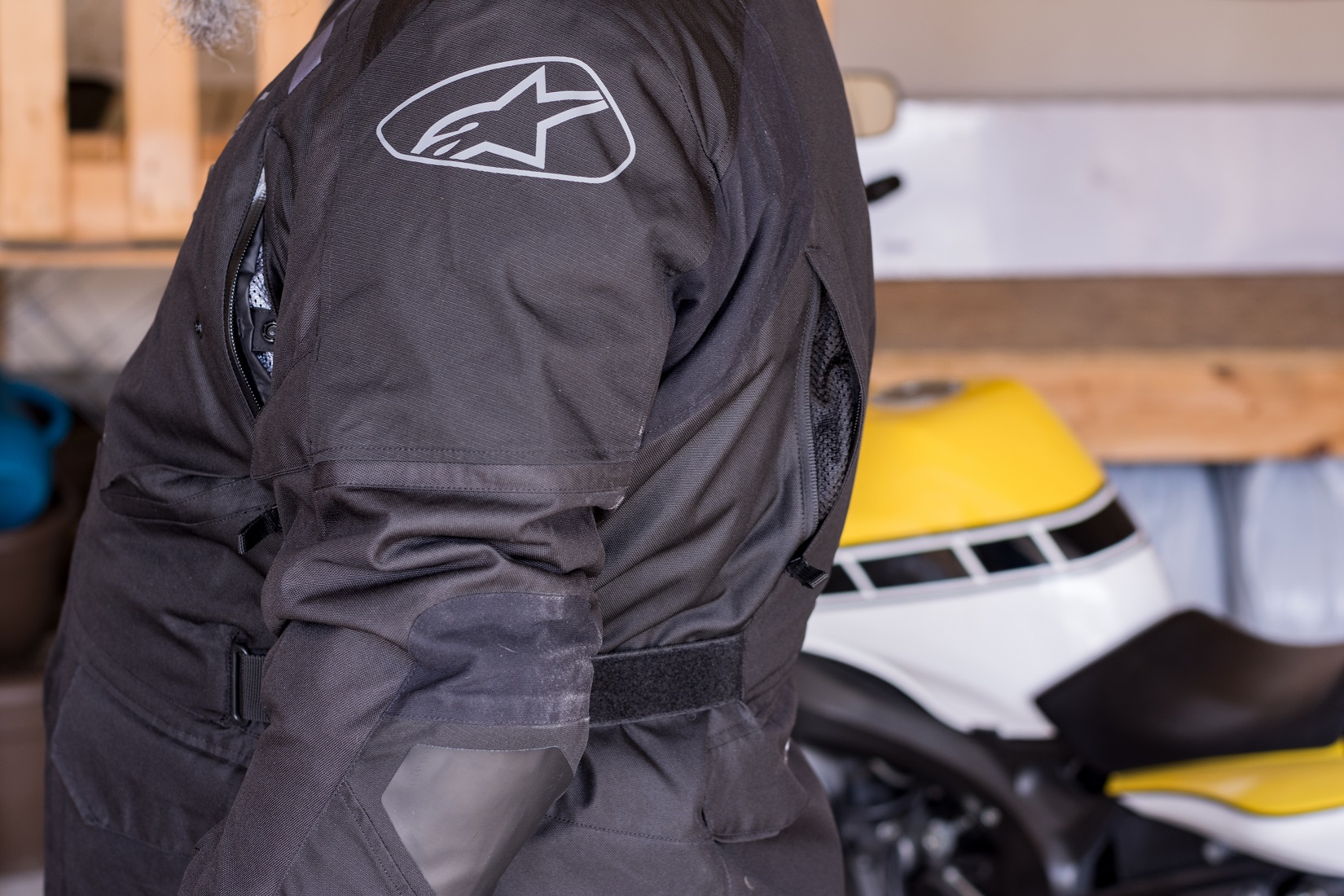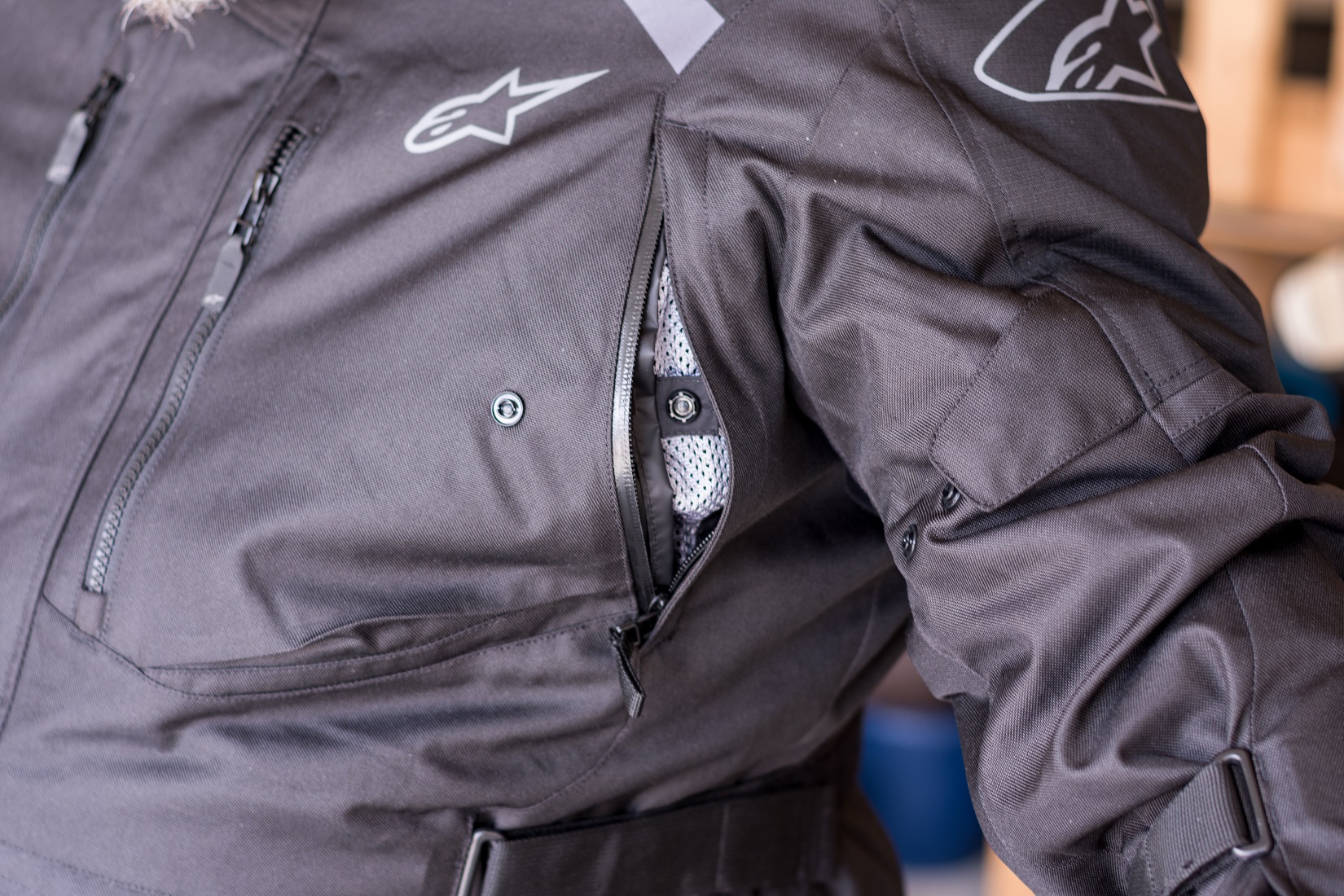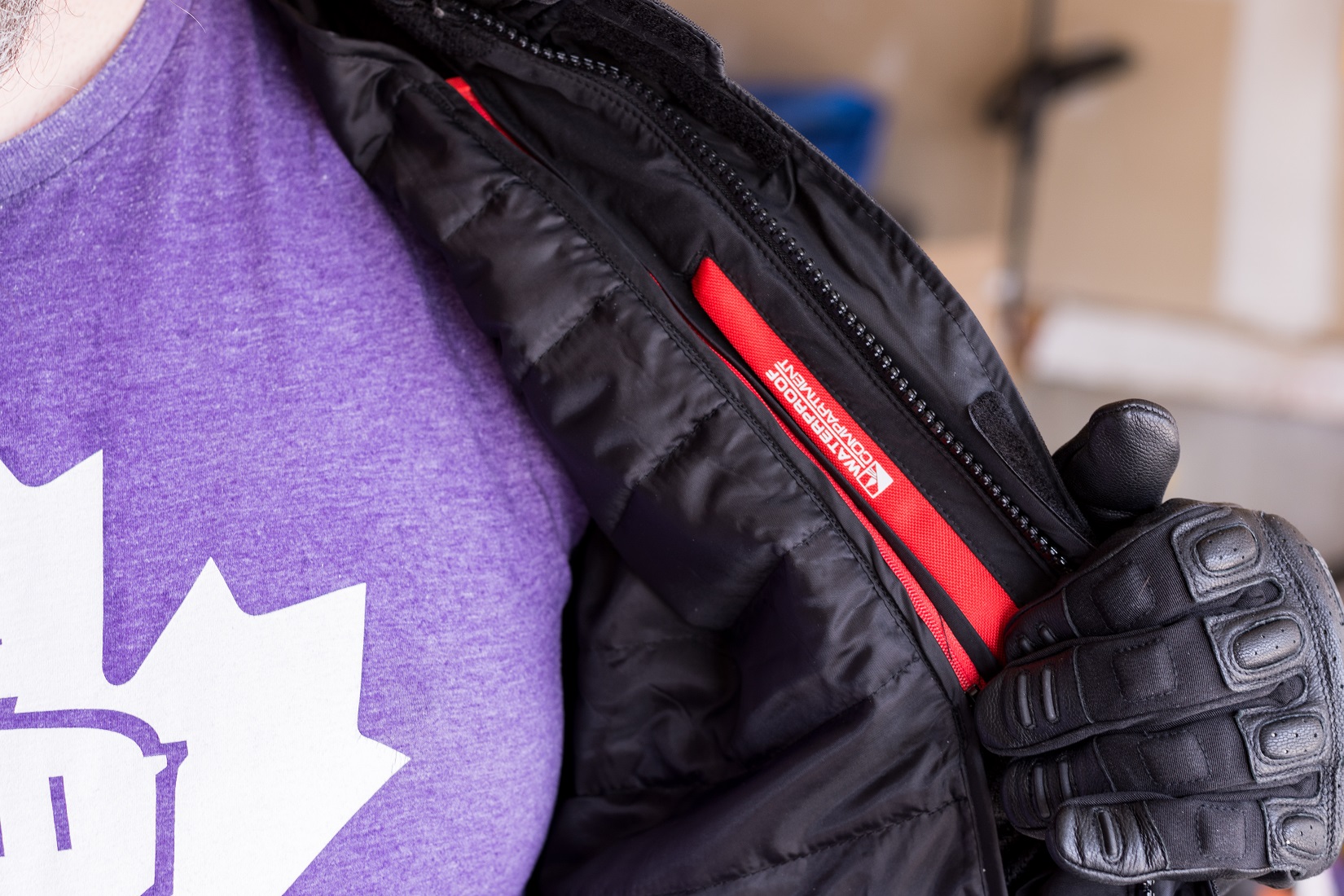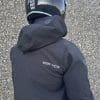Introduction
In today’s jacket market, it’s almost overwhelming trying to find the right jacket. There are jackets for different riding styles, different weather conditions, hell, there are jackets for even the most niche of markets. Armored hoodies, anyone?
Now, add in the fact that the big-n-tall crowd has more than a few issues finding gear that fits, and the issue is compounded. I personally stand 6’ 1”, I weigh 275 lbs as of the morning I am writing this review, and I am generously what one would call broad. Thick neck, wide shoulders, wide chest, a bit of a belly, and big wide hips. I make no qualms about it, I’m big and I’m heavy. I used to play rugby, and that shaped who I am today, physically.
Another compounding factor is that I live in yonder Northern country, also known as Canada. Firstly, no, we are not frozen solid all the time! Secondly, in Alberta where I live, we have weather shifts so sudden and so dramatic that throwing a dart at a wall of weather conditions is often more accurate than the official forecasts. It can be a bright, sunny summer’s day and change into a torrential downpour with hail in about 3 minutes flat.
With all of these factors in hand, I went jacket shopping. Most of the big-n-tall manufacturers are US based, but even some of their gear wasn’t fitting just right. Either too tight across the chest, or didn’t have enough room in the torso region to be able to lean forward on a bike properly. I was about ready to throw in the towel and just go home when I visited the last store on my little gear tour of my city, and came across this jacket.
Big thanks to Simon at GW Cycle here in Calgary for helping me find the perfect jacket.
Features
The Andes V3 adventure touring jacket is designed with two or three major features in mind. The first of these is that this is the first of the Andes line of adventure touring jackets designed to be used with the Alpinestars TechAir5 airbag vest underneath. As part of that design, the bicep area, upper back, and upper chest are designed slightly larger in volume than the older Andes V2.
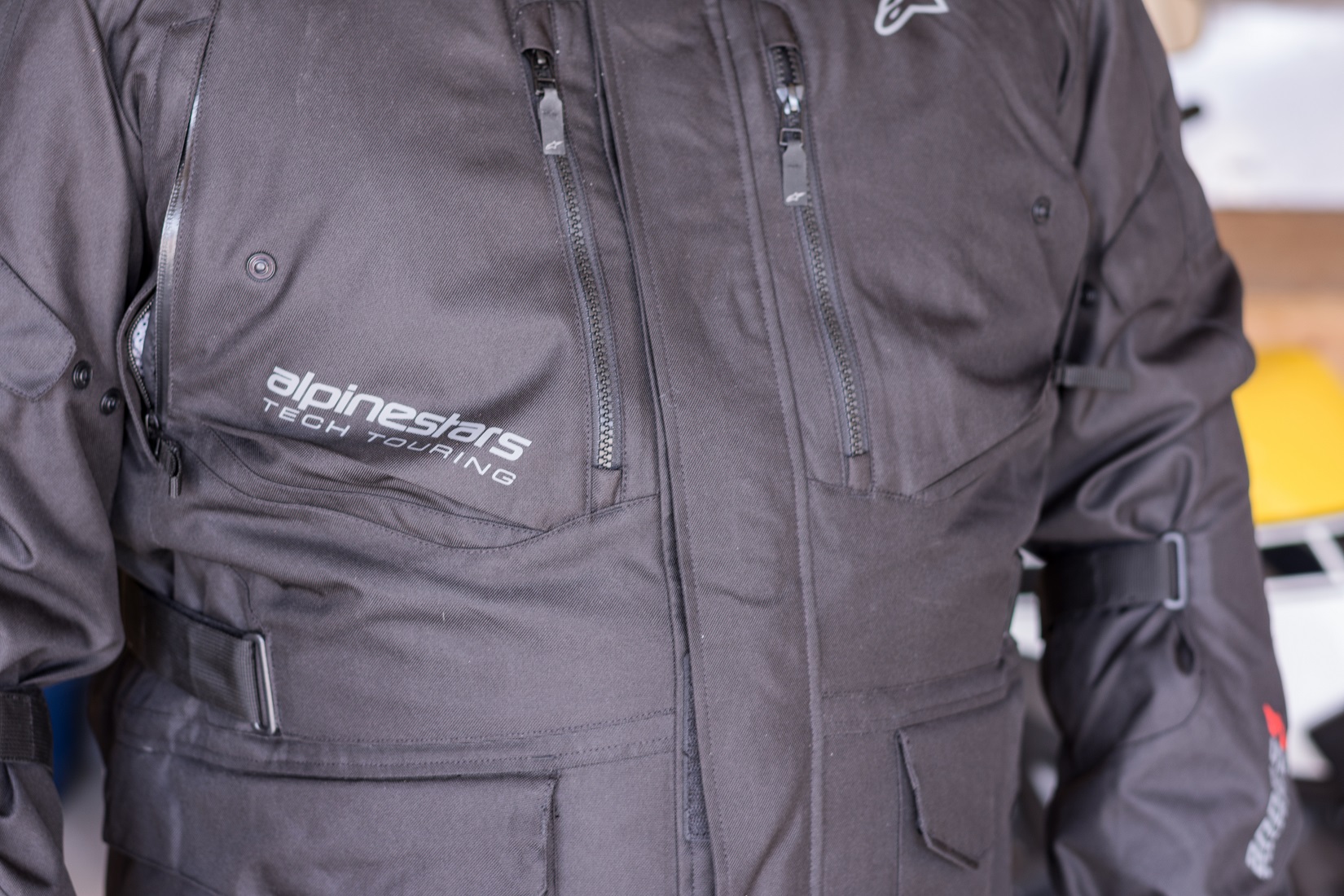
That same Nucleon Flex-Plus armor is the third feature. Newly introduced late in 2020, it also sits on the shoulders. What is nice compared to D3O armor is that the flexible nature of the armor means that it drops further down over the front and back of the shoulder. This provides improved impact protection on the upper end of the collarbone and the upper scapula compared to the Andes V2.
Both armor points are triple layered, with the armor as the base, Drystar polyfabric in the middle, and 600D ripstop equivalent reinforced polymer on the outside. This reinforced polymer travels all the way up the back of the arms to the shoulders, and then to the neck. This gives major slide areas extremely durable fabric that needs to be shorn away before any damage can happen to the armor or your skin.
Fit & Comfort
I admit, I am a hefty guy. Too much good living during my college years and never really shucking it off, I guess!
That being said, as mentioned in the intro, I am a big guy. Finding a jacket that roughly fit was challenge number one. I went through Icon, Dainese, Joe Rocket, the bunch, before I found the Andes V3. As mentioned in the features, this jacket is designed to have an airbag vest worn under it that expands in the shoulders, upper arms, and most critically chest and back areas.
This translates to the Andes V3 fitting like it was made for me. That extra room allowed my big shoulders and broad chest to easily slip in comfortably, and the adjustable neck allows for a fairly good seal around the neck without choking me. The biceps feature push button closures to adjust the tightness around the arm, which for me is leaving it as is. The forearms have a velcro strap that tightens the jacket to you, and keeps the Nucleon elbow and upper forearm armor solidly in place.
Further adjustment comes in the form of a midriff pair of velcro straps that you can pull tight and secure so that the jacket doesn’t move up and down, nor does it billow out when you have the vents held wide open. Lastly, there is an elastic pull string on either side of the hem, allowing you to pull the jacket tight over the top of your riding pants to create an overlap of armor and weather protection, should you be wearing waterproof ADV or touring pants.
The jacket is supremely comfortable when standing and moving, but once adjusted to fit, it does have a couple of flaws. The first is that since it is a three season jacket and it is designed to be waterproof with Alpinestars’ own Drystar membrane, it’s not exactly what you would call the most breathable of jackets. There is a mesh inner lining to hold it slightly off your shirt for a little airflow, but if all that heat has nowhere to go, the jacket warms up damned fast.
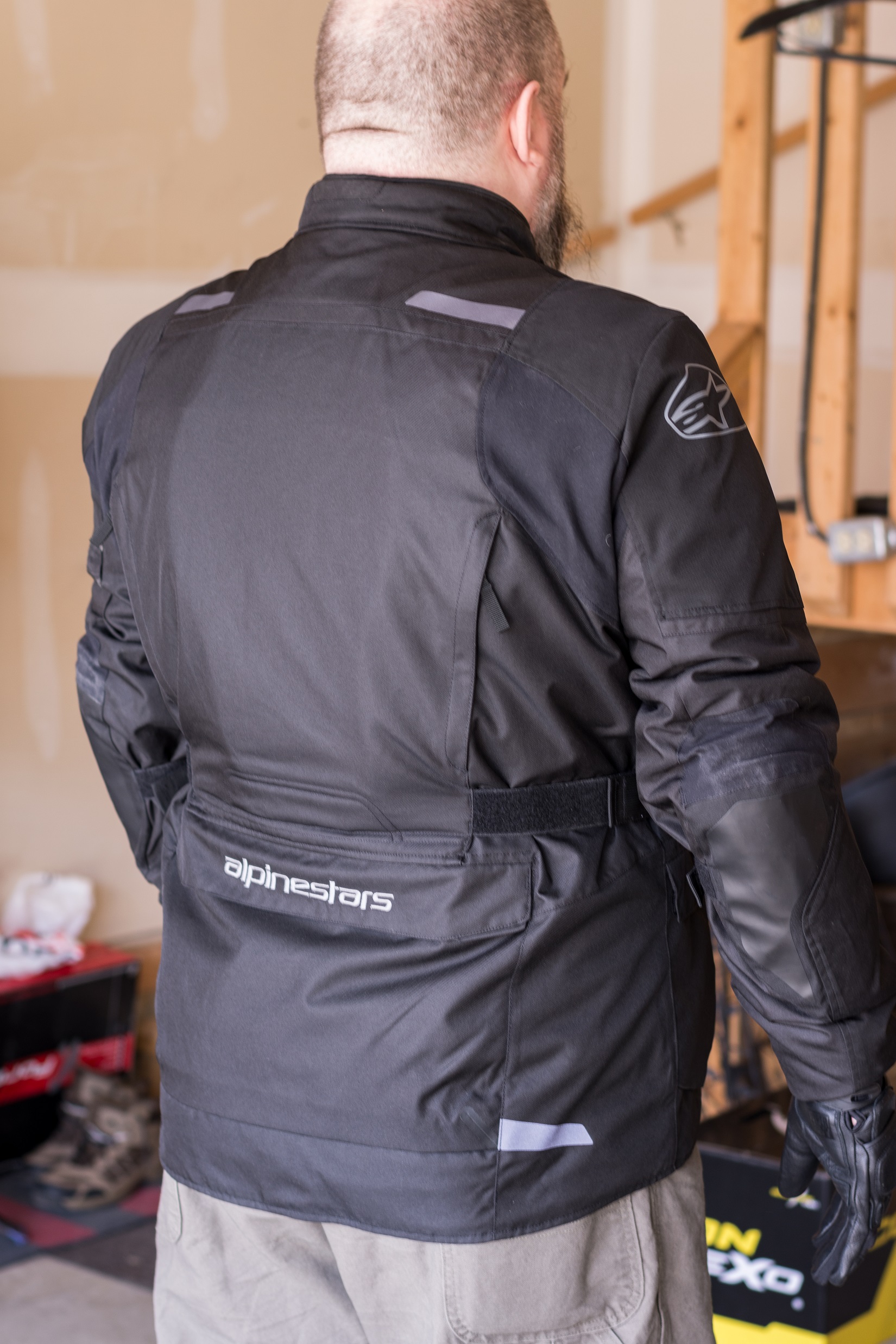
This leads to the second flaw, which is in regards to that mesh, and the fact that the jacket does not come with any back protector installed. At $280, you’d expect them to at least throw something in the back of the jacket, even a bit of useless foam. Nope. It’s up to you to buy either a D3O or one of Alpinestars’ new and wonderful Nucleon Flex-Plus back protectors for a measly $80!
I went the route of an Icon D3O CE II back protector ($25), and it slipped in easily and is securely held in place with the design of the back protector pocket. With the D3O in, it doesn’t tighten the jacket any around the chest, which is a relief.
The Andes V3 plays it along the line of being a three season jacket, but with the thermal liner in it might as well be a winter parka. It will definitely keep you warm should you go on a touring ride that takes you high up into the mountains or along a windy coast, but it also helps you overheat damned fast in most other weather.
Rating: 4 out of 5 stars
Ventilation
To combat the heat buildup, the Andes V3 has what could easily be called generous ventilation intakes and exhausts. In a bit of ingenuity and a bit of design, Alpinestars has placed the vents slightly lower than most other touring and adventure jackets.
The ingenuity comes in that the airflow passes mostly through the armpit, with some air across the chest and over the shoulder. Being one of the main natural heat sinks of the body, this allows for excess torso heat to be quickly whisked out the back of the jackets’ exhaust vents and off into nature.
The design part of the ventilation is that if you look at the Alpinestars TechAir5 airbag vest, there are specific mesh ventilation areas… you guessed it, across the armpits. By designing the Andes V3 ventilation to work in concert with a safety device, it’s quite literally two birds with one stone.
A nice touch about the front vents is that instead of using the silly internal pull string that the Andes V2 did to hold them open, there is a snap button placed on the chest area, and a snap tab inside the ventilation zone that you can put together to hold the vents as wide open as they will go.
Another important factor with the ventilation is that it is what Alpinestars labels as Direct Flow Ventilation (DFV). What this means is that you really do need to watch the skies for chances of rain, as the vents, both intake and exhaust, completely bypass the Drystar membrane lining. The exhausts are mostly okay, being hidden under the rear vertical joins of the back protector area, but the front vents would need to be zipped up to prevent your sides getting soaked.
The downside of that ventilation is that when you pull up to a red light or reach your destination, the airflow is no longer present to whisk away the heat, and because the jacket is heavy, it builds up fast. As most traffic lights are on 60 second timers, it’s not too bad, and the heat does get carried off by the airflow once you’re moving again, but in stop/start rush hour traffic, it could get fairly toasty.
Rating: 4 out of 5
Drystar Waterproofing
To test this, I quite literally, as you see in the picture below, took a cold shower in my riding gear. Yes, I am wearing a garbage bag over my pants as they are regular jeans I wear armor pieces under, and therefore not waterproof.
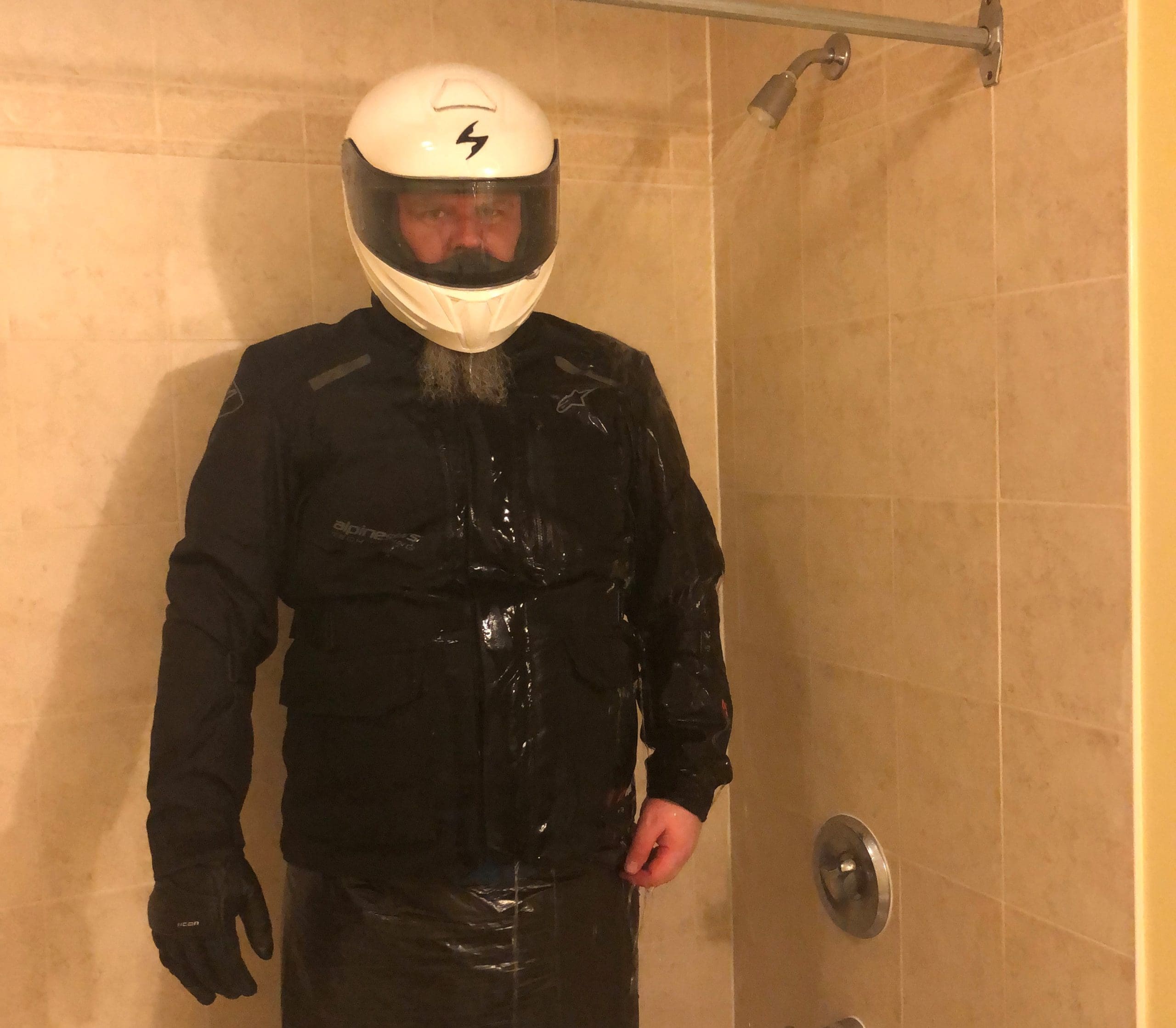
I had the neck closure done up tightly but not chokingly so, the YKK front zip done all the way up, and all the storm flaps closed along the front. I stood facing the shower head for a good 3 minutes, then let the back take the brunt of the blistering torrent of water an eco-friendly shower head dispenses. In reality, it would be equivalent to riding in a moderate to light rain.
After another 3 minutes, I did a slow, full 360 turn one way, then the other, then back for 4 minutes. My goal was to expose the neck closure, the wrists, the front pockets, the back pocket, and all seams and fabrics to some of the water. It was barely above cold water too, to test out the thermal resistance of the Drystar without the thermal liner installed.
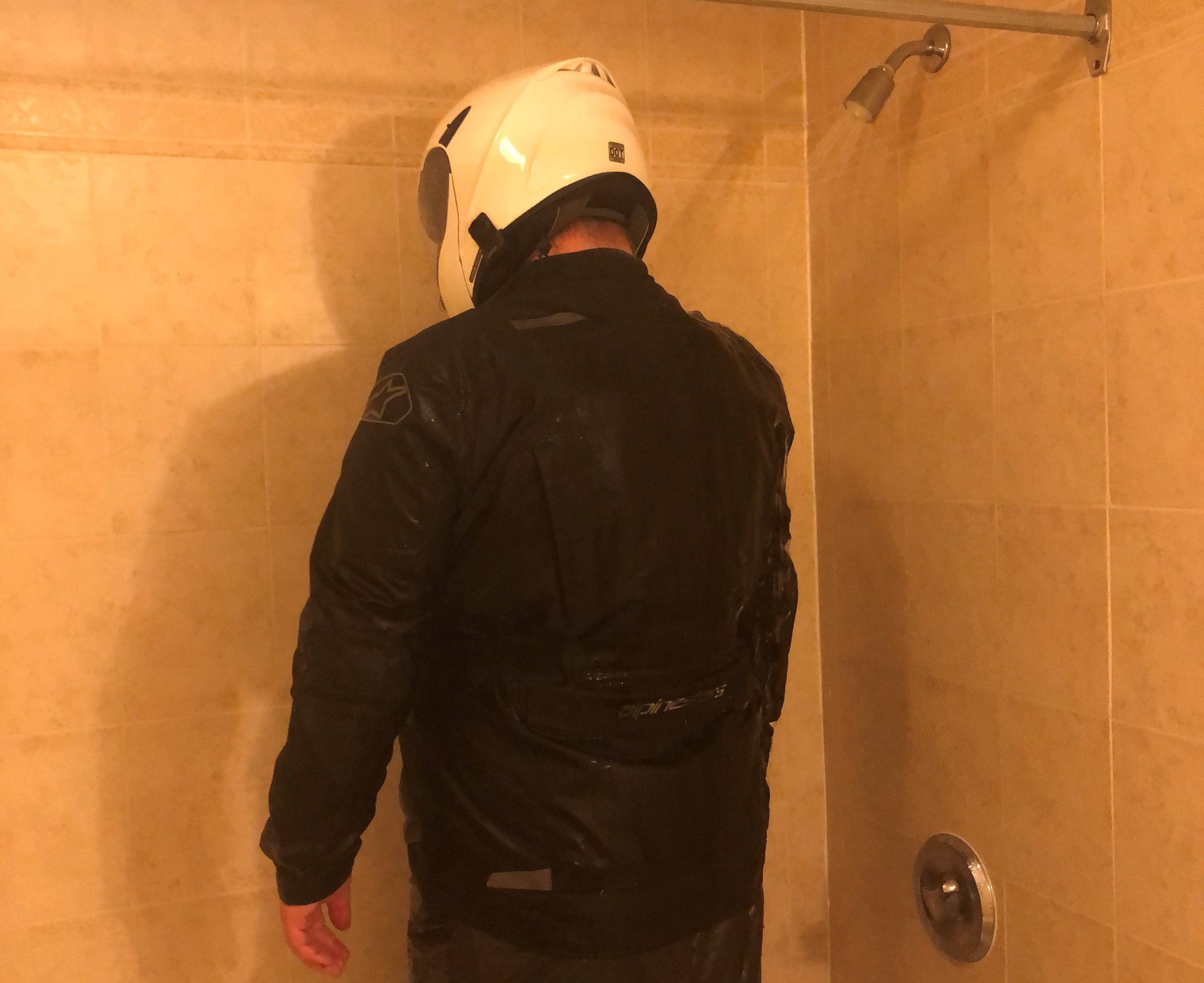
After my 10 minutes of doing what would appear to be a weird dance in my shower, I stopped the water and shook off what droplets I could from the jacket, as if I had just stepped inside after riding in the rain. There was a little seepage of water around the wrists and a tiny bit down the back of the neck where my helmet and jacket don’t quite meet.
Otherwise, I took off the jacket, and I was as dry as Arizona during a drought. When they labelled their waterproofing as Drystar, they damned well meant it.
As well, despite the water being a few degrees above “oh god that’s cold,” I was perfectly warm apart from my left hand. With the wind of riding at 30 MPH, I could understand it being a bit colder, but the fact of the matter is that no water made it through the membrane, and the internal layering of the jacket kept the membrane off my shirt and skin and allowed me to keep warm.
Rating: 5 out of 5
Zippers
All of the zippers on the jacket are YKK quality ones and move freely without snagging. The primary front zipper is also double sealed, with a waterproof layer both behind the zipper and in front of it, under the storm flap.
The ventilation zippers have Drystar membrane behind them, preventing any leaks through the front ventilation areas. The rear ventilation zippers are underneath the edge flap of the back, and are out of the direct flow of water, but are also backed with Drystar membrane.
Rating: 5 out of 5
Pockets
The Andes V3 has pockets everywhere.
The thermal lining has two internal pockets. With it removed, there are two lower internal mesh pockets, and a zippered waterproof pocket in the left internal breast area.
The exterior has five major pockets. Two Drystar rated waterproof lower pockets open with a strong pull to get the industrial level velcro to let go. These pockets are easily big enough to hold your standard plastic water bottle with room for a cookie and a granola bar in one pocket. There are two zippered chest pockets, also waterproof, which are much tighter than the lowers. It is my educated guess that these are meant to be where your wallet, smartphone, maps, documents, etc go that you may need.
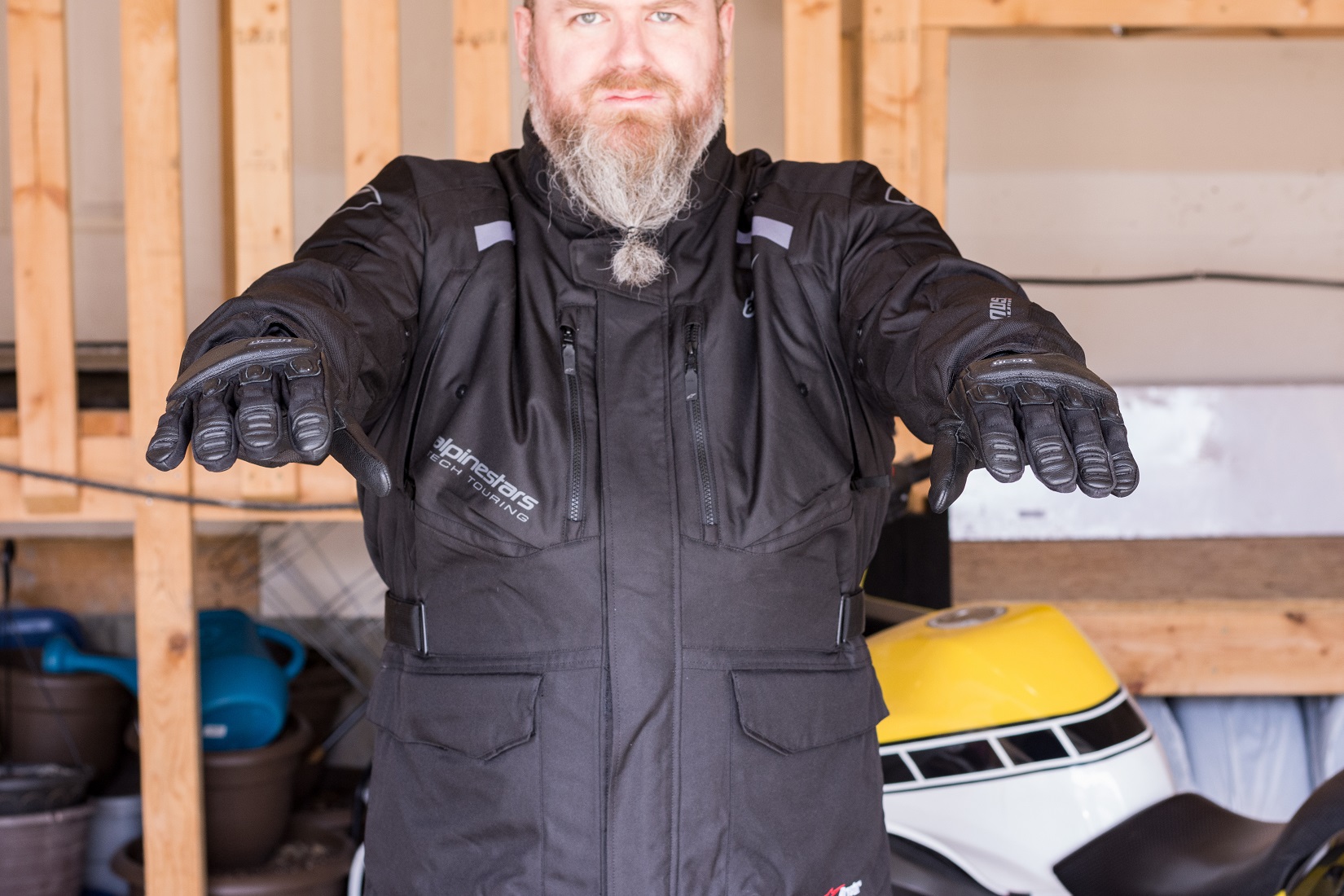


The fifth pocket is a gigantic rear pocket that covers the entire lower back of the jacket, and is waterproof but not sealed with a zip or velcro. Instead, this pocket relies on the fact that the upper flap is sewn down along the edges and overlaps the pocket by a large amount, and is designed for extreme weather windbreakers or rain gear to be stored.
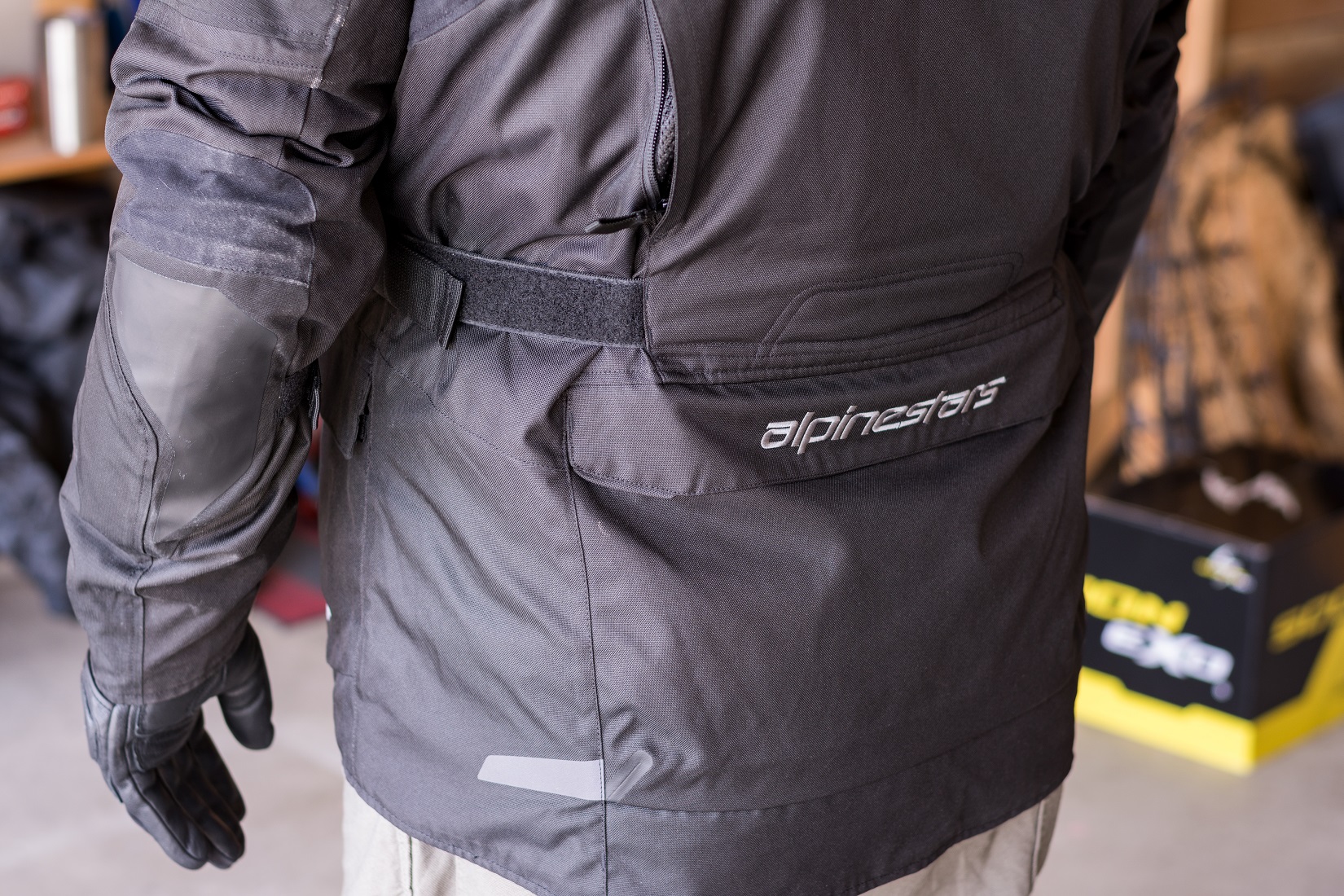


Rating: 5 out of 5
Visibility
While I may have picked up the black version of the jacket with some white accenting, there are strategically placed reflective strips all over the jacket. The elbows, the lower edges and upper edges of the back, and two high chest strips ensure any light hitting the jacket will reflect brightly. In a nice touch, the Alpinestars logo on the front and back are also reflective, and the Andes V3 Tourer branding on the left forearm is also reflective.
The Andes V3 does have 5 specific colorways: Black (the one I have), White with grey and orange highlights, Olive Green with beige and yellow highlights, Blue with black and orange highlights, and Camouflage with black, beige and orange highlights.
Real World Testing
I have taken this jacket out about 6 times in the past month for a ride, mostly due to our weather here being slightly psychotic. Every time I have worn it, however, it has performed excellently. On a bright and sunny day, it did get quite toasty, but opening the storm flap and unzipping about 6 inches helped cool down very quickly.
On the colder days, I have had the vents wide open, and it comes out to just about perfect. These are the days between 60 and 70 F. One of those riding days was extremely windy, and despite being buffeted around a lot, no wind made it through the shell to me apart from through the vents.
On the coldest day, at about 50 F, I closed only the exhausts, which let cool air enter the jacket and wallow about getting warmed up. Much like how a wetsuit works, that air was soon keeping me warm without needing to put in the thermal liner. I suspect that if temperatures had dropped to 40 F or so, I would have closed the vents and installed the liner, but thankfully it never got that cold.
Safety Certification
The Alpinestars Andes V3 has passed the new CE Cat II PPE Regulation prEN17092 test with a Category A result. This means that the jacket, as a whole, survived long enough being pushed against a sandpaper belt designed to simulate the abrasion qualities of pavement long enough to prevent injuries to the skin . The belt and pressure system simulates coming off a bike at approximately 40 KPH, or about 25 MPH
Category A is the best that adventure gear and urban riding gear can obtain, with Category AA reserved for sport touring (read: sportbikes and supersports) and Category AAA reserved for powersport racing gear.
The shoulder and elbow protectors are certified CE Level I impact armor.
Verdict
There was a lot about the Andes V2 that wasn’t broken, and Alpinestars didn’t fix what worked. What they did fix, however, makes the Andes V3 a solid adventure jacket. It’s more of an evolution of the Andes V2 than a direct replacement, and the things that were worked on were the key areas of concern expressed to Alpinestars.
As well, from my personal point of view as a big-n-tall guy, the fact that I could find any Alpinestars gear that fit me was astonishing. After years and years of suffering the fate of Euro sizing not translating well to American or Canadian sizes, it’s nice to finally be getting some gear from the best companies across the pond in realistic proportions for the giants that wander these North American lands.
As I purchased the Alpinestars Andes V3 with my own money, the real question in the verdict is do I feel like it’s money well spent? Put simply, it is my opinion that the jacket is worth every cent I put towards it.
Overall: 4.5 out of 5 stars
Pros
- Excellent protection with the new Alpinestars Nucleon armor
- About as waterproof as a jacket can be
- Infinitely adjustable to find the perfect fit
- Excellent ventilation that runs across two major heat areas of the body
- High visibility reflective material everywhere
- Need a pocket? Have a pocket!
Cons
- If the airflow stops, so does the cooling.
- Heat builds up quickly in the jacket, especially with the thermal liner in
- No included back protector
- Heavy
Specs
- Manufacturer: Alpinestars
- Price (When Tested): $279.95
- Available Colours: Black, Green Dark Blue, Camo, Gray
- Sizes: S / M / L / XL / up to 6XL
- Review Date: April 2021
Important Links


